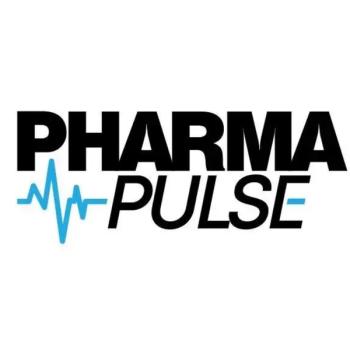
- Pharmaceutical Commerce - October 2024
- Volume 19
- Issue 5
Keeping Do-Not-Freeze Injectable Drugs Safe Through the Last Mile
Alongside the proper temperature-monitoring technology, optimal production control is necessary for success in cold chain drug delivery.
Precision and reliability are paramount in the pharmaceutical industry. Every production aspect must be meticulously controlled to ensure the efficacy and safety of medications and vaccines. This level of control extends to distribution, where cold chain logistics are crucial to maintaining product integrity.
Do-not-freeze injectable drugs, including biologics (such as insulin) and GLP-1 class drugs, must be transported and stored under the right conditions to maintain their potency and quality. However, determining whether unacceptably low temperatures had occurred during transit can be challenging, as freezing isn’t always evident. Continuous monitoring is needed to comply with regulations, detect temperature deviations, take corrective measures, and deliver safe products.
Quality impact of temperature deviations
When do-not-freeze injectable drugs are exposed to temperatures outside the ranges prescribed for storage and transport, their chemical and physical properties become altered. As a result, the drugs are less effective, potentially harmful to patients, and must be discarded.
Even the slightest temperature variation in the last mile of distribution can wreak havoc, spoiling entire batches of medicine. As you can imagine, such events create significant financial losses for pharma companies. IQVIA's Institute for Human Data Science estimates the biopharma industry loses about $35 billion annually due to cold chain logistics and temperature control issues.
The good news is that these losses are avoidable, provided you become more agile and adapt digital technologies for supply chain control and visibility.
Making last-mile distribution less daunting
Ensuring every batch of do-not-freeze injectable drugs is safe and high-quality doesn’t have to be daunting. Continuous monitoring lets you catch temperature excursions early and mitigate them before they become problematic.
You can track temperature fluctuations using two modern technologies:
- Temperature indicators. These cost-effective stickers change color to alert you when do-not-freeze injectable drugs are exposed to potentially damaging temperature levels. That way, you’ll know whether the drug has frozen and thawed during transit, even when it has no visible signs of having been frozen.
- Condition monitors.These cutting-edge devices continuously measure critical environmental profiles of pharmaceuticals and provide a full view of their journeys through the supply chain.
Temperature stability during transportation and storage
Real-time temperature monitoring and evaluation ensure that do-not-freeze injectable drugs are within the proper range in the last miles of their journeys, which is essential. Deviations must be reported and inspected immediately when they occur.
Cold chain logistics managers must use the right solutions for the product being shipped at every stage of the supply chain. Single-use indicators are most valuable during the last mile, as they are more easily read by distribution staff and end users. Conversely, devices with minute-by-minute connected alerts and robust analytics capabilities are preferable for continuously monitoring the entire supply chain.
In addition, everyone involved in last-mile distribution should understand their respective job and its far-reaching consequences. This can be achieved through regular, comprehensive training programs that cover the procedures for handling temperature-sensitive drugs and when there is an alert of a temperature excursion.
The training should be tailored to each personnel’s role and give them a thorough understanding of temperature control best practices and the effect of excursions on drug quality and safety. Evaluation should be done at the end of the training to guarantee adequate learning.
Efforts should also be made to keep workers updated with relevant regulatory compliance and industry standards.
The regulatory landscape governing drug distribution
Maintaining a secure and safe cold chain is critical to the safety of pharmaceutical supply. For this reason, the distribution of healthcare-related products is highly regulated.
As the quantity of temperature-sensitive drugs increases, there’s a shift toward standardizing pharmaceutical distribution regulations. In the US, the FDA outlines its standards for distributing healthcare-related products within its current good manufacturing practices. The document stipulates best practices for transport, packaging, labeling, record-keeping and personnel training.
Similarly, the EU’s Good Distribution Practice of Medicinal Products for Human Use requires cold chain logistics stakeholders to ensure the integrity and quality of medicines by adhering to the storage conditions prescribed by manufacturers.
Understanding the regulatory and logistical requirements for do-not-freeze injectable drugs and implementing cold chain management best practices in the last mile helps prevent product degradation, ensuring products reach end users safely.
Last-mile support
There’s no doubt that keeping do-not-freeze injectable drugs stable from manufacturing to the last miles of their journeys is essential. Combined with the right techniques and employee training, modern temperature monitoring devices can help ensure success in last-mile distribution—and provide an edge in cold chain logistics.
About the Author
Bill Sanez is Director of Global Marketing at SpotSee.
Articles in this issue
about 1 year ago
Pharmaceutical Commerce - October 2024 Issue (PDF)about 1 year ago
Strengthening the Chainabout 1 year ago
A Sense of Urgencyabout 1 year ago
Conference Connect: The Twists and Turns in Pharma Traceabilityabout 1 year ago
Tapping the Value of Conscientious Stewardshipabout 1 year ago
Specialty Pharmacy: The Trends Shaping Best Practicesabout 1 year ago
Three Key Pharmaceutical Logistics Challenges to Monitorabout 1 year ago
Key Elements for Success in Pharma M&A Integrationabout 1 year ago
The Latest Surrounding Rising Medicare Part D Premiumsabout 1 year ago
Reflections on IRA Drug Pricing NegotiationsNewsletter
Stay ahead in the life sciences industry with Pharmaceutical Commerce, the latest news, trends, and strategies in drug distribution, commercialization, and market access.




